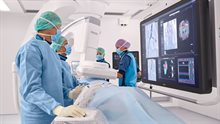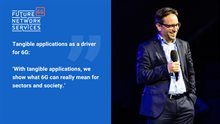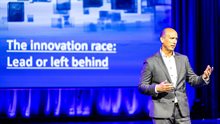Experimenting to break the ice
Robert Hofsink, who has been with Philips for 25 years, shares his insights on the role of innovative technologies such as 5G and 6G within medical imaging and therapies in an interview. Robert currently works in the Philips Image Guided Therapy division, which focuses on developing image-guided systems for minimally invasive medical treatments, primarily in collaboration with specialists such as cardiologists, oncologists and radiologists.
Medical imaging and connectivity
A key reason for Philips to join the FNS program is the prospect of learning about new networking capabilities and providing early input on the requirements and standards of these technologies. "On the one hand we want to learn from what is possible with 5G and 6G," says Robert, "on the other hand we want to give our input at an early stage on the architecture and overall requirements." The focus here is on improving applications in operating rooms and cathlabs, where complex image processing is crucial.
Philips sees opportunities here for cloud-based solutions, where algorithms that currently run locally in hospitals could in the future be available through a cloud infrastructure. However, this requires a very reliable and fast data connection. "Our medical applications have specific requirements for data transport and response times," Robert explains, because doctors use real-time image data during surgery that must be readily available.
Quality and reliability of service
In medical applications, it is crucial that the technology always work reliably, especially during sensitive clinical procedures. "You don't want the cloud connection to fail halfway through a clinical procedure," Robert stresses. That's why Philips is exploring how network technologies can meet stringent quality and speed requirements. The concept of "Quality of Service" plays a central role here, where medical equipment must continue to function under all conditions.

The role of 6G is also being explored, with an eye toward using wireless technologies in complex environments such as operating rooms. "It would be a big improvement if we could replace cables that are currently in the way with a robust wireless interface," says Robert. This would not only make the work environment less chaotic, but also increase freedom of movement for medical staff."
Cooperation within the FNS project
Within FNS, Philips leads the experiments on image-guided therapies in work package 3.2. This means that Philips is the "use case" owner, while other consortium members, such as TNO, Odido and Ericsson, contribute their expertise on technology. "We explain what our application looks like, and they come up with suggestions for experiments and practical components," Robert explains. Philips will conduct the experiments in a special lab where the first connections will be tested. For the tests, for example, an antenna on the roof of the Philips building will be used to achieve a stable 5G connection.
Work package 3.2. focuses on developing network architectures that can support the data processing needs of complex medical applications.
Challenges in implementing 5G and 6G
While the technology is promising, there are also challenges. One of the biggest obstacles is the combination of requirements: large amounts of data must be processed in real time, with stringent response time requirements. "We expect our use case, compared to other applications within the consortium, to have stringent requirements for the capabilities of 5G and 6G," Robert said.
External factors also play a role, such as the environment in which the technology is applied. Operating rooms often have lead shielding against X-rays, which can have a negative effect on the range and stability of wireless signals. The presence of other devices that emit electromagnetic radiation can also cause disruptions.
Future
Philips has had previous experience with cloud-based solutions, albeit in a wired infrastructure. These initial experiences have shown that cloud-based applications can function within the workflow of a clinical environment. Robert sees the FNS program as an important next step: "We now want to see if we can leverage the same benefits of cloud-based applications in an infrastructure based on 5G and 6G." The 5G and 6G experiments explore architectures that improve the reliability, speed and flexibility of image-guided therapies while meeting the stringent requirements of the medical industry. I expect the success of these experiments could be an icebreaker for other healthcare applications. Once conclusively proven that wireless technology is safe and effective in a medical environment, other companies and departments can begin to deploy it as well," Robert concludes.



